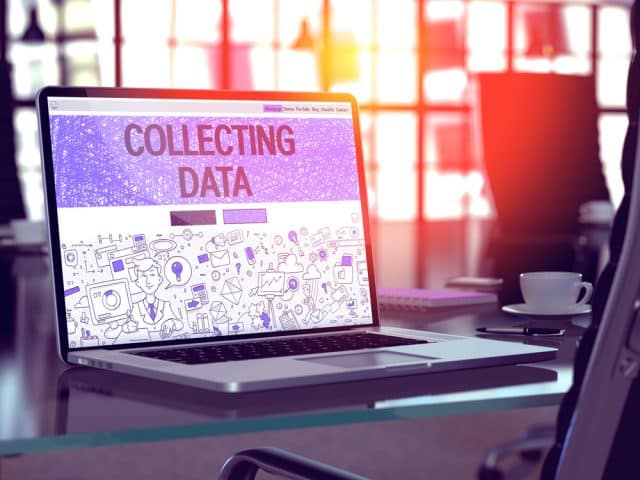Exploring the value of data mobility for modern enterprises

The phrase "information is the new oil" is tossed about with relative abandon these days. Data is undoubtedly one of the most critical elements in a successful 21st century business, but its utility only becomes apparent after it has been subjected to some kind of thoughtful analysis.
For many businesses, this is where the struggle begins; how can we extract meaningful insights from data quickly, efficiently and effectively? How do we shorten the lag between the moment a new data point is generated and the time that data becomes available to business analytics tools or a real-time machine learning (ML) model?
Why Is Becoming a Data-Driven Company Still a Challenge?
Over the past decade, organizations of all sizes have spent billions with the goal of improving their capacity to gather data from various sources, rationalize it, and extract business value from it. In light of this massive investment, it’s truly surprising that only 26.5 percent of organizations believe they have achieved the vision of becoming a data-driven company.
Why is this?
For starters, the systems in which new data is being collected are, for the most part, stand-alone operations. Yes, your ERP system might be integrated to some extent with your CRM system, but each was initially designed to function as an independent system with security-related restrictions and strict limits on operational impact. To put it in slightly different terms, those two systems were essentially designed to be data silos -- each with its own database, its data model, and its own set of business rules.
As the number of systems has proliferated, so too have the silos. Now we have ERP, CRM, marketing automation, e-commerce, mobile applications, field service applications, trading platforms, logistics management, and many more. For most companies, add a cornucopia of custom-built applications, spreadsheets and other tools that add further complexity to the picture. Turns out, silos are everywhere, and in most companies, that list just keeps growing.
As a result, decision-makers can’t get a unified view of what really matters to their business. The highest value data for any company is the real-time change in customers, competitors or external threats, but because that data is locked up in silos, it’s difficult to access.
The old-school workaround for this problem was a data warehouse and a collection of ETL (extract, transform, load) processes that could extract data from key systems, transform it, perform some of the most computationally intensive tasks during off-hours, and make it available to business users at some recurring point.
But that’s certainly not real time. It doesn’t create the kind of agility that makes it possible for business leaders to respond rapidly to change. Worse still, it’s relatively useless for things like fraud detection, IT systems monitoring, or managing just-in-time supply chains among a litany of other super-high-value applications.
Even if you have unfettered access to the most valuable data, turning it into actionable advantages requires someone who understands how to leverage the data in a way that suits the needs of the business. To gain true competitive advantage, organizations must understand how to use data to drive specific outcomes. That means having people on staff who understand both the nature of the data and the nature of the business. Unfortunately, it’s extraordinarily difficult to find a combination of those two attributes in the same person.
Overcoming Compromises and Achieving Data Freedom
Despite all the excitement about data analytics, it’s not a silver bullet. Turning data into real business value isn’t simply a matter of deploying all the right tools. To be sure, it requires some smart investment in good technology, but ultimately, it’s got to be about identifying high-value business cases and making sure that your business users have what they need to deliver positive outcomes.
Business success is virtually always about compromise. For years, CTOs have grappled with the pros and cons of unified systems versus best-of-breed environments. They have weighed the advantages of diverse, purpose-built systems against the inherent value of a large-scale monolithic platform that offers a holistic approach to the business. In the end, best-of-breed won that battle. As a result, the problem of data silos became more pronounced.
The hunger for real-time analytics has rendered the pain caused by data silos far more palpable. But there is good news; if we make the data from all those different systems available in a single place, we can have the best of both worlds. Each business application can play its part -- operating according to its own unique set of rules -- and business users can finally see more than just a fragmented view of their customers, competitors and the external environment.
The answer is real-time streaming data pipelines. Capture changes when they occur, transform them on the fly, and deliver them to a cloud data platform, where they are available for real-time analytics, machine learning, artificial intelligence (AI), or any other application that drives value from real-time data.
This is next-gen data replication. It’s highly scalable, reliable and cloud-centric. It enables high-volume, high-velocity data flows from a diverse set of data sources. Real-time delivery means virtually instantaneous availability. That, in turn, translates to better responsiveness in the business.
Real-Time Data Replication
Real-time data replication is a key ingredient in any broader digital transformation initiative because it enables rapid, reliable, seamless transfer of information between myriad data sources and target systems, including the cloud data platforms most companies are using for high-performance analytics.
Until you remove the friction associated with accessing data in your silos, your data transformation initiatives won’t operate at their full potential. Real-time data replication enables interoperability between databases. It delivers faster analytics for greater business agility. It provides the fuel for intensive AI and ML workloads.
In the right hands, those advantages can be converted into ongoing business value. It’s helping companies deliver better customer experiences. It’s enabling real-time market analysis and predictive supply chains. It’s helping companies to detect fraud and identify cybersecurity threats as they happen.
Streaming data pipelines also create agility and efficiency in their own right. With best-in-class change data capture (CDC) software, IT departments and data teams can rapidly create and deploy new pipelines, change them quickly when needed, or seamlessly deal with the changes others have made that your team was not aware of. They no longer need to dedicate significant development resources to build custom point-to-point integrations that are expensive to maintain over the long term. Automation focuses on making databases as flexible and accessible as possible. This includes deploying data pipelines nearly instantly, automatic schema conversion, automatic denormalization, data transformations, and more.
Enabling Digital Transformation Throughout the Enterprise
Real-time data replication brings unparalleled access and flexibility to data platforms. Companies gain control over the movement of their data from any source system to whichever target systems best meet their business needs. With the right CDC product, they get the flexibility to change those pipelines quickly and easily to adapt to changing requirements. They can connect anything to anything -- whether it’s on-premise, in the cloud or hybrid.
At a deeper level, this is about removing the barriers to digital transformation. It’s about unleashing the power of cloud data platforms and equipping your best business users with game-changing, data-driven insights. If you intend to leapfrog the competition, provide stellar customer experiences, and optimize internal processes, you need to gain a unified view of data across your entire enterprise.
That also means breaking the barriers that stand between on-premise systems and the cloud. With real-time data pipelines and streaming ELT (extract, load, transform), enterprises can connect their on-prem transactional databases with their cloud-based systems and enter the world of hybrid cloud. That allows access to highly scalable, highly elastic, and affordable resources. Computationally intensive tasks such as analytics and AI become practical and affordable with the move to the cloud.
The single most effective way to bridge the chasm between on-premise systems and cloud data platforms is with log-based change data capture. It’s flexible, affordable, and it enables the real-time enterprise to become a reality.
Image credit: Tashatuvango / Shutterstock

Gary Hagmueller is the CEO of Arcion, the world’s only cloud-native, CDC-based data replication platform. Gary is a proven leader who has created over $7.5 billion in enterprise value through two IPOs and four M&A exits over his more than 20 years in the tech industry. Gary holds an MBA from the Marshall School of Business at the University of Southern California, where he was named Sheth Fellow, as well as a bachelor’s degree in Business Administration from Arizona State University. As the father to twin teenage boys, he is clearly experienced in project management and negotiation skills. For more information on Arcion, visit www.arcion.io/, and follow the company on LinkedIn, YouTube and @ArcionLabs.
